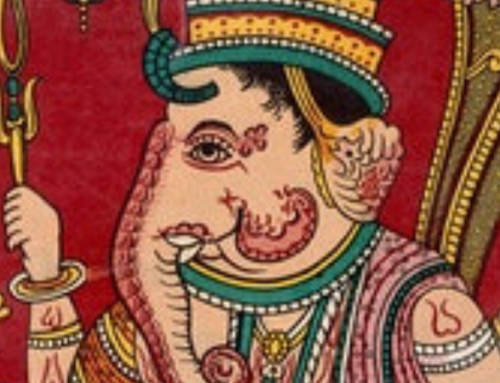Working with Fire
This month I taught an enjoyable advanced retreat with Scott Blossom and Chandra Easton on working with the Five Elements, especially fire, to overcome our personal limitations and better connect with the Supreme Reality. We were blessed with some very focused students with whom we got to practice homa and chant mantras. What was reinforced for me during the course of the week was that many are interested in working with fire, but feel either intimidated by it or uncertain about how to get started. This month’s update is therefore dedicated to some practicalities of fire worship.
A homa is a ritual fire offering without a set formula, unlike a yajna, or Vedic sacrifice, which is much more complicated. You don’t need to be a specialist; my mentor Vimalananda said that anyone who aligns themselves well with the fire element can perform homa. My article “Ritual Success”, which explains more about how particular divine personalities are worshiped, offers a perspective on the ritual method he taught me, and you will find some examples of simplified homa procedures here.
You can, if you like, simplify your procedure ever further. Though many perform homas with specific outcomes in mind, unless you are instructed otherwise by a mentor or guru it is best to focus on building a relationship with the fire with the general intention that the fire assist you to connect more effectively and intimately with the divine.
To perform homa one needs fuel and a container, or kunda, which will be either a vessel (usually clay, brick or metal) or a hole in the ground. In most places your fuel will be wood, preferably of a tree that is respected as sacred in your locality, and that burns well (in India cakes of dried cow dung are also often employed), Offerings consist of ghee, sweets, barley, black sesame, resins, sage and other scented herbs. You can buy mixes of samagri, or ritual offerings containing various herbs, at Indian grocery stores, or you can make your own. Coconuts have traditionally been offered because they resemble the human head, which symbolizes the offering of all our senses to the divine and reminds us that we will one day perish. Camphor purifies the atmosphere and helps get your fire started. Only by working with the fire yourself can you establish how much of each to add and how the fire must be handled for both you & it to thrive.
You can use any mantras you know during this practice, so long as they resonate with you and enable your connection to the Supreme to thrive. Public mantras like Om Nama Shivaya are available for use by anyone; the question of private, personal mantras is examined in the Aghora series.
When possible it is best to face east or north when performing a homa, and to choose a spot that you can regularly return to (though performing homa in spaces that are new to you can also be rewarding). When you have completed your worship take care to clean the area well, then wash the floor or ground with a little water (to help cool the ground on/in which your kunda was situated). Don’t step on the ash that has fallen on the ground; either collect & use it (homa ash is a wonderful tonic for healing that can be rubbed on your body wherever needed) or offer it to plants (with some water to help “wash it down”) or bodies of water (not including drainage ditches!).
Working with fire offers us a chance to open ourselves fully to the most transformational of elements. Vimalananda said, “Fire always burns, and if you worship it properly it will burn away all your bad karmas.” For this process to really work it is important to have faith in the process, to show up and participate enthusiastically and with an open heart. If you have good intention, you will eventually succeed. Tathastu!


